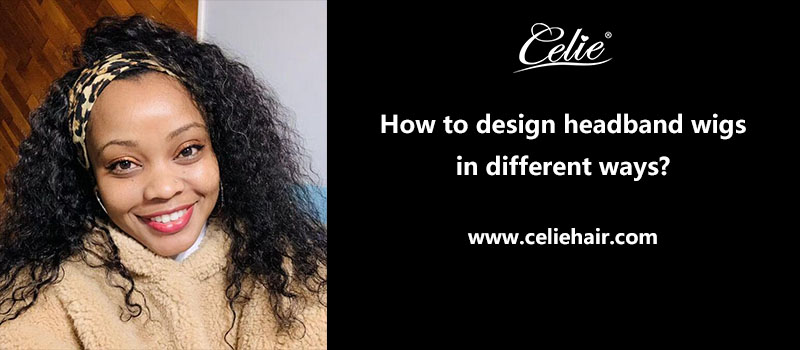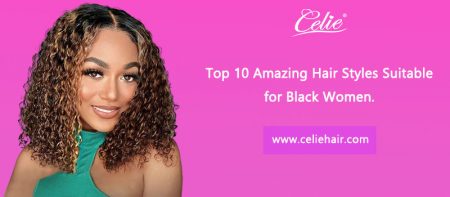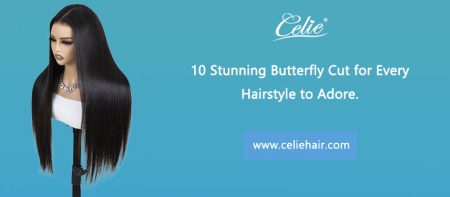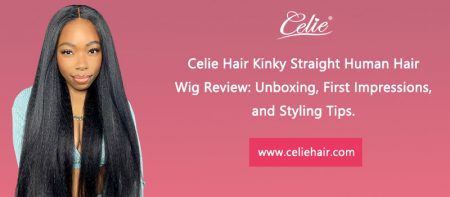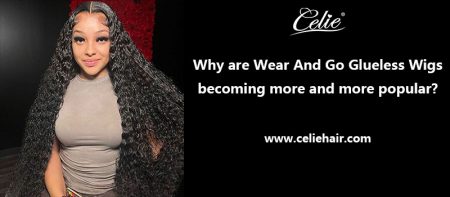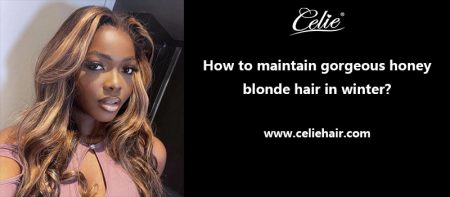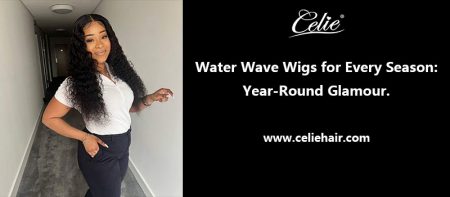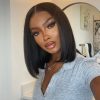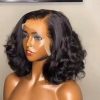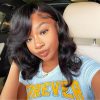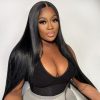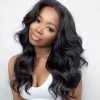Headband wigs have become a popular and versatile choice for those seeking to enhance their hair aesthetics. These innovative wigs offer convenience and flexibility, allowing wearers to effortlessly change their hairstyles without committing to permanent changes. With a headband attached, these wigs can be worn with ease, making them a favorite among fashion enthusiasts and individuals with hair loss concerns. In this article, we will explore how to design headband wigs in different ways, unveiling a world of creative possibilities.

I. Customization Techniques for Headband Wigs.
Headband wigs provide a versatile canvas for customization, allowing you to create a unique and personalized look that suits your style. Here are some customization techniques to explore:
Cutting and Styling:
One of the most common ways to customize a headband wig is by cutting and styling the hair to achieve your desired look. Here are a few options to consider:
Trimming and Shaping: Use hair cutting shears to trim the wig’s length and create a shape that flatters your face. You can opt for a blunt cut, layered look, or even add bangs for a fresh style.
Layering: Adding layers to your headband wig can give it movement and dimension. Graduated layers can create a more natural-looking hairstyle and allow for easier styling versatility.
Curling or Straightening: Depending on the wig’s hair type, you can use heat styling tools such as curling irons or straighteners to create different textures. Experiment with loose waves, tight curls, or sleek straight styles to transform the wig’s appearance.
Coloring and Highlights:
Changing the hair color or adding highlights can completely transform the look of your headband wig. Here are a few options to consider:
Temporary Hair Dyes or Sprays: Explore temporary hair dyes or sprays to experiment with different colors without committing to a permanent change. These are available in a variety of shades and can be easily applied and washed out.
Highlights or Lowlights: Adding highlights or lowlights to your headband wig can create depth and dimension. You can choose a shade slightly lighter or darker than the base color to achieve a natural or bold look.
Ombre or Balayage: Ombre and balayage techniques involve blending two or more colors seamlessly. These techniques create a gradient effect, with a darker color at the roots transitioning to a lighter shade towards the ends.
Accessories and Embellishments:
Accessories and embellishments can elevate the look of your headband wig and add a touch of personal style. Here are some ideas:
Headbands: Experiment with different headbands that complement your outfit and enhance the wig’s appearance. Choose from a wide range of styles, such as satin, bejeweled, floral, or fabric headbands.
Bows and Scarves: Add a playful or elegant touch by incorporating bows or scarves into your headband wig style. These accessories can be tied around the headband or used to create unique hair wraps.
Decorative Clips or Pins: Use decorative clips or pins to secure the headband in place while adding a touch of flair. Choose from an array of designs, including flowers, feathers, or sparkling gems.
II. Styling Methods for Headband Wigs.
Headband wigs offer immense versatility when it comes to styling options. You can experiment with various hairstyles and techniques to achieve different looks. Here are some popular styling methods for headband wigs:
Updos and Ponytails:
Updo hairstyles and ponytails are great options for creating elegant and polished looks with headband wigs. Here are a few styling ideas:
Classic Bun: Gather the wig’s hair into a high or low ponytail and twist it into a bun. Secure with bobby pins or a hair tie, and use hairspray for added hold. You can also wrap a stylish hair accessory around the base of the bun for an extra touch of elegance.
Chignon: Create a chignon by twisting and folding the hair of your headband wig at the nape of your neck. Secure it with bobby pins, leaving some loose strands for a soft and romantic effect.
French Twist: Gather the hair of the wig into a low ponytail, twist it upwards, and tuck it in while securing with bobby pins. This classic updo exudes sophistication and works well for both formal and casual occasions.
Ponytail: Simply gather the wig’s hair into a high, mid, or low ponytail. You can opt for a sleek and polished look by smoothing out the hair, or create a more casual style by leaving some loose strands or adding texture with curls or waves.
Half-Up, Half-Down Styles:
Half-up, half-down hairstyles are versatile and offer a balanced and trendy look. Here are some ideas for styling your headband wig in a half-up, half-down fashion:
Classic Half-Up Style: Take a section of hair from the front or crown area of the wig and secure it with a clip or hair tie. This creates a chic half-up, half-down look that showcases the length and volume of the wig.
Braided Half-Up Style: Divide the top section of the wig’s hair into two or more sections and create braids. Secure the braids together at the back of the head with bobby pins or a small hair tie. This adds a playful and bohemian touch to your hairstyle.
Accessories and Accents: Enhance your half-up, half-down style by adding accessories like ribbons, headbands, or decorative clips. These elements can elevate your look and make it more personalized and unique.
Wavy and Curly Styles:
Wavy and curly hairstyles can add texture and volume to your headband wig, giving it a more natural and glamorous appearance. Here are some ways to achieve wavy and curly styles:
Curling Wand or Hot Rollers: Use a curling wand or hot rollers to create loose waves or defined curls. Take small sections of the wig’s hair and wrap them around the curling wand or hot rollers, holding for a few seconds before releasing. Allow the curls to cool and set, and then gently separate them with your fingers for a more relaxed look.
Curl Patterns: Experiment with different curl patterns such as beach waves, spiral curls, or corkscrew curls. You can achieve these by using different-sized curling irons, flexi rods, or foam rollers. Select the desired sections of the wig’s hair, wrap them around the chosen curling tool, and allow them to set before releasing.
Heat-Free Curls: If you prefer to minimize heat styling, try heat-free methods like using foam or flexi rods. Dampen the wig’s hair, wrap small sections around the rods, and secure them in place. Leave them overnight or for a few hours to let the hair dry and form curls naturally.
Braided Hairstyles:
Braided hairstyles can add intricate details and a boho-chic vibe to your headband wig. Here are some braiding techniques to consider:
French Braid: Start at the front hairline and divide the wig’s hair into three sections. Cross the side sections over the center section, gradually adding more hair as you move backward. Continue braiding until you reach the nape of the neck, then secure with a hair tie or bobby pins. You can create a single French braid or multiple braids for a more intricate look.
Dutch Braid: Similar to a French braid, a Dutch braid involves crossing the side sections under the center section instead of over. This creates a braid that appears more prominent and stands out from the head. Experiment with different Dutch braiding techniques, such as braiding along the hairline or creating a Dutch fishtail braid.
Fishtail Braid: Divide the wig’s hair into two equal sections. Take a small strand of hair from the outer edge of one section and cross it over to the opposite section. Repeat this process, alternating sides until you reach the ends of the hair. Secure the braid with a hair tie and gently loosen it for a more relaxed and bohemian appearance.
Top Knots and Buns:
Top knots and buns are trendy and effortless hairstyles that can be achieved with headband wigs. Here are a few options:
High Top Knot: Gather the wig’s hair into a high ponytail and twist it into a tight coil. Wrap the coil around the base of the ponytail, securing it with bobby pins. This creates a stylish and voluminous top knot that can be dressed up or down.
Low Messy Bun: Gather the wig’s hair into a low ponytail and twist it loosely. Wrap the twisted hair around the base of the ponytail, allowing some strands to fall out for a messy and relaxed look. Secure with bobby pins, and use your fingers to loosen and shape the bun.
Retro-Inspired Styles:
Retro hairstyles can add a touch of vintage glamour to your headband wig. Consider these options:
Victory Rolls: Part the wig’s hair to one side and section off a small portion near the front. Hold the section upright and roll it inward toward the scalp, securing it with bobby pins. Repeat on the other side for symmetrical rolls. This style is reminiscent of the iconic victory rolls from the 1940s and adds a retro flair to your overall look.
Pin Curls: Create pin curls by taking small sections of the wig’s hair, twisting them, and securing them to the scalp with bobby pins. Allow the curls to set for a few hours or overnight before removing the pins. This technique results in bouncy and defined curls that evoke a vintage aesthetic.
-595x638.jpg)
In summary.
Designing headband wigs in different ways is an exciting journey that allows you to experiment with various styles, colors, and techniques. By understanding the construction of headband wigs and exploring customization techniques, you can truly make your wig an extension of your personality. From cutting and styling to coloring and accessorizing, the possibilities are endless. Moreover, the versatility of headband wigs allows for a range of styling methods, including updos, half-up, half-down styles, and wavy or curly looks. By following proper maintenance and care tips, you can ensure the longevity and beauty of your headband wigs, making them a lasting investment in your personal style.
In summary, headband wigs offer a seamless and flexible solution to achieve different hairstyles without any permanent commitment. Embrace your creativity, experiment with designs, and unlock the limitless potential of headband wigs to express your unique style with confidence.

